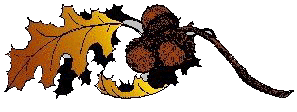The Wind
Today, let's talk about wind and the medieval mind. The University of Houston's College of Engineering presents this series about the machines that make our civilization run, and the people whose ingenuity created them.
What, in the mind of a medieval millwright, drove his mill? What invisible efficacy was taken from the wind to grind grain? The wind, after all, captures our imaginations strongly enough when we know about air, and kinetic energy, and force balances.
A little word-game gives us a startling insight. The ancient tongues all used the same word for wind, for breath, and for soul. In Sanskrit that word is atman, in Latin it's either spiritus or anima, in Hebrew it's rauch, and in Greek it's pneuma. Rauch shows up again as the German word for smoke, and you see pneuma in air-related words like pneumatic. The Russian word for spirit, duh, has many wind-related cognates. Duhovyia intrumenti, for example, means wind instruments.
The connection is that both the wind and the soul were the breath of God. Genesis, for example, begins with God breathing a soul into Adam. Medieval engineers saw nothing less blowing their windmills. The power source was mystical. By the way, some historians are pretty sure that the windmill itself was derived from ancient Buddhist prayer wheels -- spun by sail-like propellers.
We can describe the wind in technical terms today; but it hasn't lost its metaphorical power. The 19th-century naturalist poet Shelley shouted at the west wind,
. . . Be thou, Spirit fierce, My spirit! Be thou me, impetuous one! Drive my dead thoughts over the universe, Like wither'd leaves, to quicken new birth.
His wind wasn't just spiritus -- it was a renewing spirit -- a cleansing new broom -- the same imagery we use when we tell each other, "It's an ill wind that blows no good."
The world is girdled with a prevailing wind pattern. The first time you fly to London you're startled to find that New York is two hours farther from London than London is from New York, because Shelley's westerlies prevail in a band around the 45th parallel. Below the westerlies, northeasterly trade winds blow down to an equatorial band that's almost devoid of wind. These waters are called the "horse latitudes" because sailors on ships becalmed in them had to kill any horses on board to save water. Of course, they're also called the doldrums, which means disspirited.
The possible return to wind power is a new wind that's blowing through our technology. I have a friend who teaches energy engineering at UCLA. He's bought a power-generating windmill on a windmill-farm in California. He goes out to see it. All he tells me is that it's pretty; but I'm inclined to think that the attraction is more fundamental than that.
I'm John Lienhard, at the University of Houston, where we're interested in the way inventive minds work.
(Theme music)
This program has been greatly revised as Episode 1576.
Drive my dead thoughts ... like withers'd leaves ...
